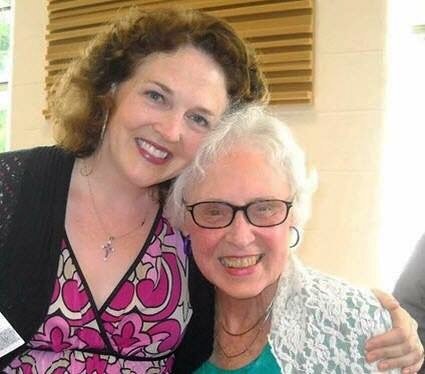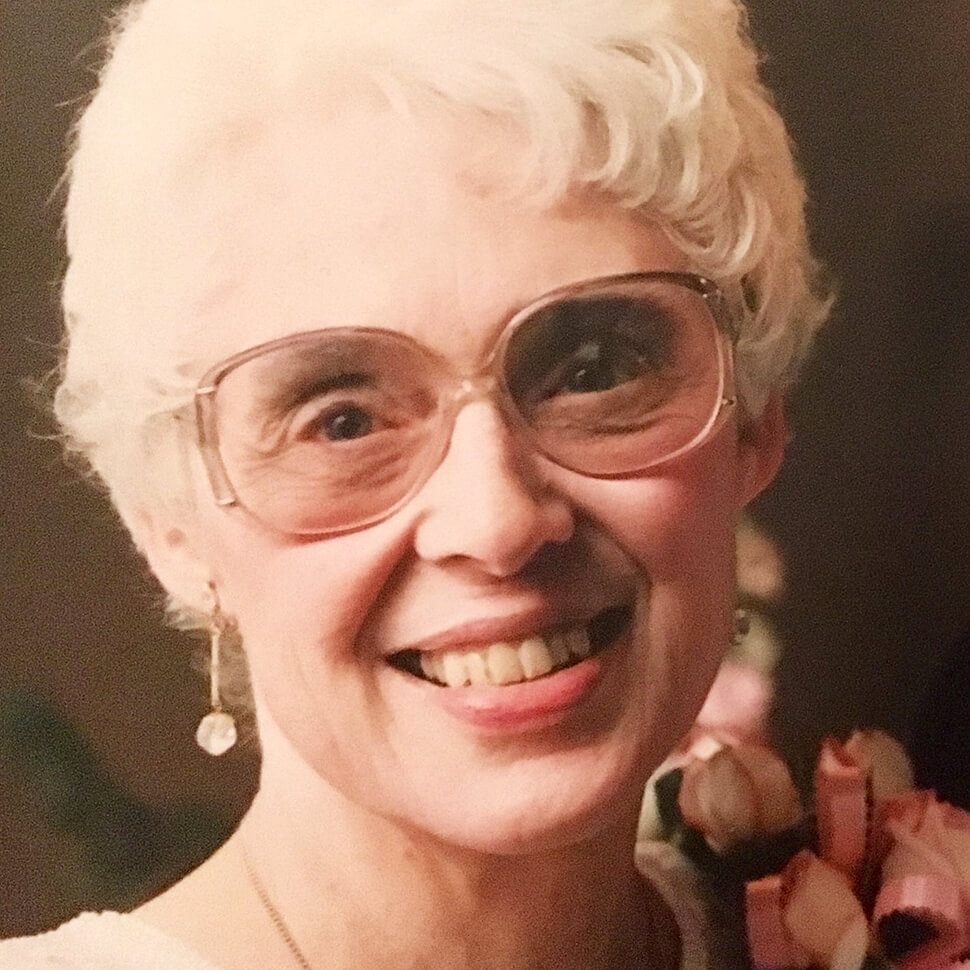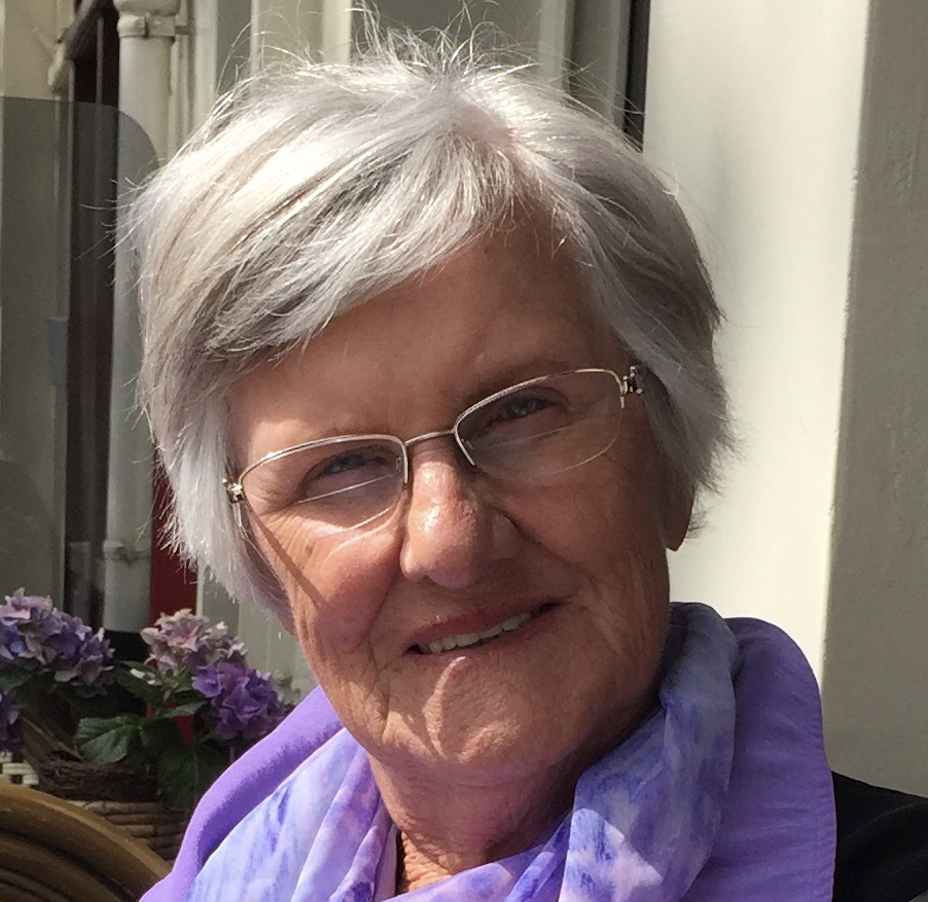Mary Foti is the Grants Coordinator for Lawrence School in Broadview Heights, Ohio. She lives with her family in Shaker Heights, Ohio.
I was first diagnosed with breast cancer in 2010 after a routine mammogram at age 41. I joined a long line of family members who received cancer diagnoses over the years, including my aunt, who died of ovarian cancer in 1989, my father, who died of brain cancer that same year, and my mother, who was first diagnosed with breast cancer in 2006 and later died as well. I’ve lost more relatives to cancer on both sides of my family than I care to count.
Because of my family history, my surgeon suggested I get tested for a possible genetic mutation. Genetic testing had advanced quickly since 2006, when my mother was initially tested (after her first diagnosis) and found to be negative.
A Grim Discovery
My test results did indeed reveal a BRCA2 mutation that was not discoverable with the testing methods available to my mother just a few years earlier. My mother was re-tested and, not surprisingly, found to carry the same mutation. I had inherited it from her, and based on the cancer patterns in her family, we believe she inherited it from her father.
Everyone has BRCA genes, which are supposed to act as “tumor suppressors” when they are working properly. But when certain mutations are inherited within these genes, they cannot work as they are supposed to and therefore the risk of ovarian, breast and some other cancers rises dramatically. My specific BRCA2 mutation gave me about an 87% lifetime risk of developing breast cancer. That means nearly 9 out of 10 women with this mutation will get breast cancer in their lifetimes, whereas the national average is about 1 in 8. Diet and lifestyle are not a factor for BRCA-related cancers, because healthy living cannot “fix” an inherited genetic problem.
Even though the news that I carried this mutation was grim, I was oddly relieved: finally, we had an answer to our longstanding question as to why so many of us, especially on my mom’s side of the family, developed cancer. Many people never get an answer why they got cancer, but now I had a scientific explanation that made sense.

After my diagnosis, I had seven surgeries to remove the cancer, reconstruct my breasts, and remove other potentially affected organs (because of my mutation, I also carried a high risk of ovarian, fallopian tube, and another type of breast cancer). I have now done everything medically possible to reduce my risks, but there is never a way to be sure it was enough.
My Parents’ Struggle
When my father died of brain cancer in 1989, I was just a teenager. My family and I watched him endure a long, slow decline as he lost his ability to walk, speak, or feed himself. He was a brilliant English professor, and he could no longer communicate. It was a terrible death that I fear to this day, and I still struggle with the thought of that happening to me or someone else I love.
In 2008, my mother developed a second, different type of breast cancer in her other breast. Four years later, she learned that it metastasized to her liver and bones, and she was now Stage 4. She initially had been diagnosed as stage 1, lymph node negative, as I had also been just two years earlier. It was devastating news.
Mom endured every possible treatment: surgery, radiation, multiple rounds and types of chemotherapy, a number of oral medications, hormone therapy and so on, all of which brought with them complications and toxic side effects. I tried to remain optimistic when her recurrence was discovered, but my heart sank inside.
My mother’s oncologist told her she had about six months to live, but there was a remote possibility she could live for as long as two years if her tumors responded to the aggressive chemo regimen. My mother never shared any of this with me; I found all of this out after her death. She only told me that her cancer was “treatable.”
Even though I’d just been through breast cancer myself, I didn’t know a lot about metastatic cancer at the time. I didn’t know that sometimes treatments just don’t work, and early detection doesn’t always save lives. In addition to worrying about my mom, I worried my own cancer would also return. What what would happen to me? Was I destined to the same fate? And perhaps worst of all, had I passed this devastating gene mutation to my own children?
Rounds of Treatment
Towards the end of my mom’s life, she was in and out of emergency rooms all too frequently, with terrible symptoms. At one of her ER visits, her oncologist suggested they try yet another chemotherapy regimen. I was shocked: my mother wasn’t even able to stand on her own at that point. It was obvious her health and strength were failing. Why didn’t they offer her hospice or palliative care, instead of pursuing even more aggressive treatments? It seemed cruel, and what would it give her? More weeks or months of misery and suffering?
What I most appreciate about death with dignity is that it is up to the patient to choose the time, place, and manner of his/her death.
I knew in my heart my mother was dying. But none of her doctors actually confirmed this at the time, and I wasn’t ready to face that reality myself. As I would learn later, after requesting a hearing with the hospital and her doctor, my mother had in fact asked her oncologist not to tell me she was terminal. Because of HIPPA laws, her doctor could not tell us any of this. Having just been through my own breast cancer diagnosis, it seems my mother did not want to burden me with her own tragic news at such a difficult time.
Shock And Confusion
The day before she died, my mother was once again rushed to a local emergency room and shortly thereafter transferred to the ICU at a nearby hospital in Cleveland. We later found out her medical records were not transferred from one care facility to another, so the hospital never received her living will and related documents. My stepfather, who was her health care power of attorney, was so blindsided by her rapid decline (as we all were) that he wasn’t initially prepared to make end-of-life decisions on her behalf. None of the doctors or nurses even offered to discuss this issue with us. At first, we were only told she was experiencing severe side effects from her latest chemo regimen.
The hospital tried all sorts of emergency measures to raise her blood pressure and wanted to put her on life support. I knew what they were doing would not cure her cancer, and she continued to get worse by the hour. I could not imagine how much pain and discomfort she must have been in. I felt completely helpless. I knew my mother wouldn’t want any of these procedures, but I could do nothing to stop it. Why were they doing this to her?
I became furious as the topic of intubation came up again. I told the nurse they were not to touch her, and after much discussion with my family members, we all agreed not to proceed with it. My mother was unconscious; she couldn’t speak for herself.
I sat on her bed and told the hospital staff, “You will not touch her again.” They finally listened to me.

The ICU nurse contacted the doctor on call, who looked at my mother’s records from his home computer and informed us that my mother only had about 7 hours left to live, and thus there was no point in continuing life-saving measures.
Again, I was shocked, confused and hurt. This is how we learned she’s dying? There was no meeting with the family? Where was her oncologist? Why was there so little communication or compassion? What doctor tells someone their loved one is dying over the phone?
A Painful End
My mother died in that ICU the morning of September 9, 2012, not quite seven months from her metastatic diagnosis. Thankfully, we were all with her, but it was such a horrible experience that I still have nightmares about it.
I was angry with her doctors and nurses at first for all they put my mother through before she died, but later realized their job is to keep someone alive until they have legal consent to stop all life-saving treatment. But sometimes that means putting a patient through prolonged pain for just a few extra hours or days of life. It made no sense to me.
There must be a better way to die.
Ultimately, in a way my mom did have the death she chose, as awful as it was, in part to spare me and others in the family from the heartbreak of learning her cancer was terminal for as long as possible. But I know that I will not choose to die that way. I am forever scarred from watching her and my father’s final days. I don’t want to ever put my spouse and children through that chaos, helplessness and agony.
The Road to Advocacy
For a long time after she died, I was angry with my mother. She had not been honest with me about her terminal diagnosis. We were incredibly close, and I was bewildered by her choices, none of which she had shared with me at the time. But my heart broke thinking about how she tried to spare me from knowing she was dying for as long as she possibly could. Gradually, I began to understand she was just trying to be a good mom, as she always had been, trying to protect me from a painful and difficult reality: a reality that I might also have to face someday.
I decided to become a Death with Dignity advocate after I started volunteering with FORCE, a nonprofit group dedicated to educating and advocating for women and men with hereditary mutations that cause breast, ovarian, prostate, and related cancers. Again and again, I heard stories about people who had endured horrific suffering near the end of their lives, even while in hospice or palliative care. Some of them were friends I met through the group and I watched them waste away in their final days and hours.
Why is death such a taboo topic, even in a hospital, where it happens on a daily basis? What can be done to change the cultural stigma around discussing death and dying?
The tide is starting to turn on the national level, and I’m encouraged about the future of this movement.
I found Death with Dignity National Center on Facebook and was excited to learn that there was an effort underway in Ohio to pass an assisted-dying law. I contacted Lisa Vigil Schattinger, executive director of Ohio End of Life Options (OELO), to see how I could help. I have since been helping out with administrative work and recently completed OELO’s speaker’s training so that I can help educate others about what OELO is trying to accomplish.
I am proud to support Lisa’s efforts. It is so important to pass law not just in Ohio, but in all 50 states. The tide is starting to turn on the national level, and I’m encouraged about the future of this movement.
Death with Dignity Offers Choice
Today, my own health remains very good. Thankfully, I have not experienced a recurrence or metastasis of my cancer, but there are never any guarantees. Having lost both my parents and all of my biological aunts and uncles to this disease, I know my long-term odds probably aren’t good.
If I am ever faced with a terminal diagnosis, I want to know that I can legally choose to end my suffering on my own terms. I may not end up using that option, but I want it to be my choice and mine alone.
Those memories of watching so many terrible deaths over the years never leave you.
What I most appreciate about death with dignity is that it is up to the patient to choose the time, place, and manner of his/her death.
Many people have the misconception this law would legalize euthanasia, but that is not what this is about. I would feel much better knowing that I had that legal option if my pain became too much to endure and my decline too traumatic for my family to witness.
I am a Catholic. I don’t believe God wants us to die in pain, facing weeks or months of horrible suffering, having to endure grueling treatments that offer no hope of a cure. I believe God loves me and would respect my choice. Many of my fellow Catholics may disagree with this stance, but I have made peace with that. If you don’t believe in the law, you don’t have to use it. Nobody will force you to. But that’s the point: nobody should force me to endure a horrible death, either.
I am doing my best to take the negative experience of losing family members to terminal illness and turn it into a positive change for others down the road. This is one way I choose to honor my parents. I think they would be proud of me.

